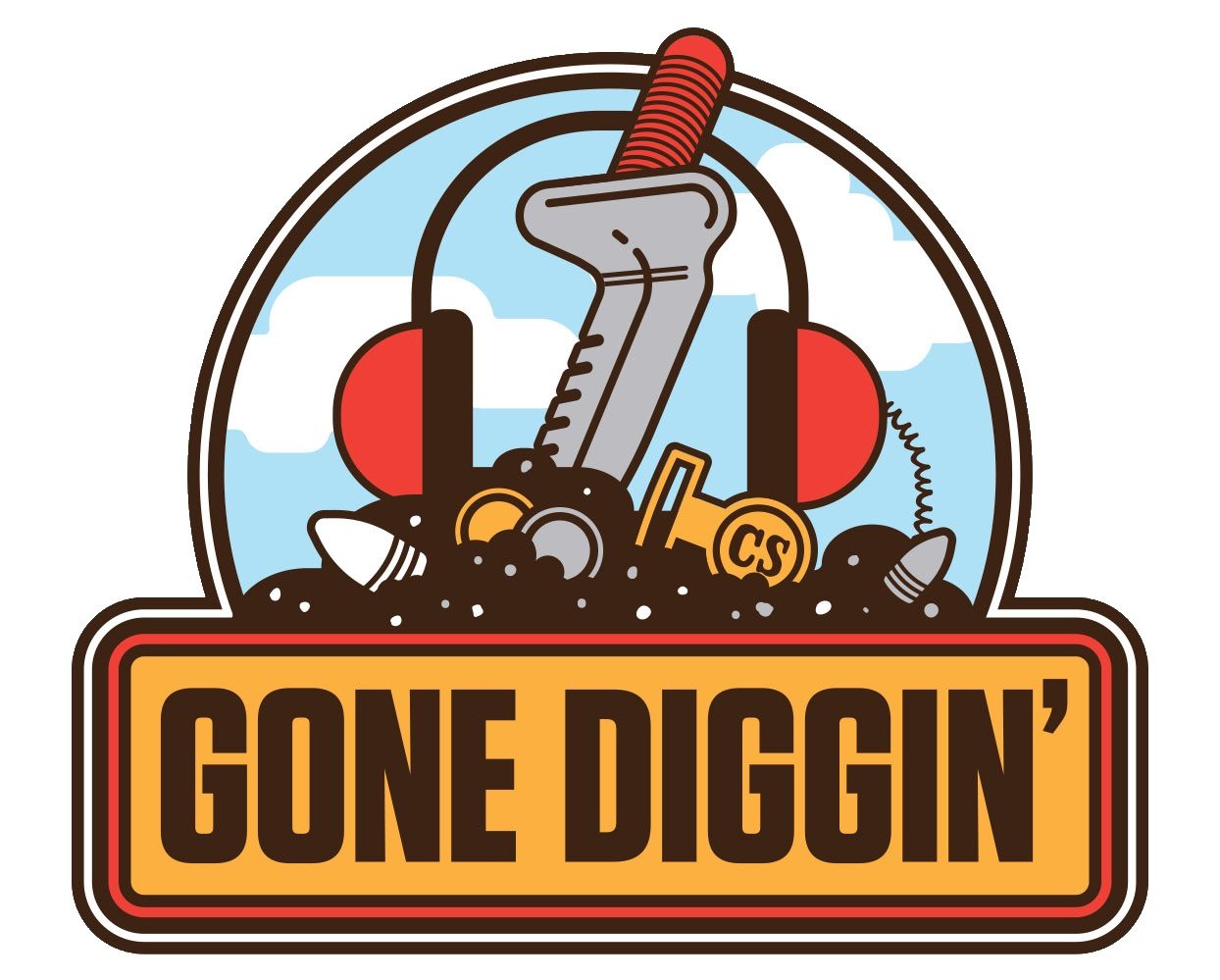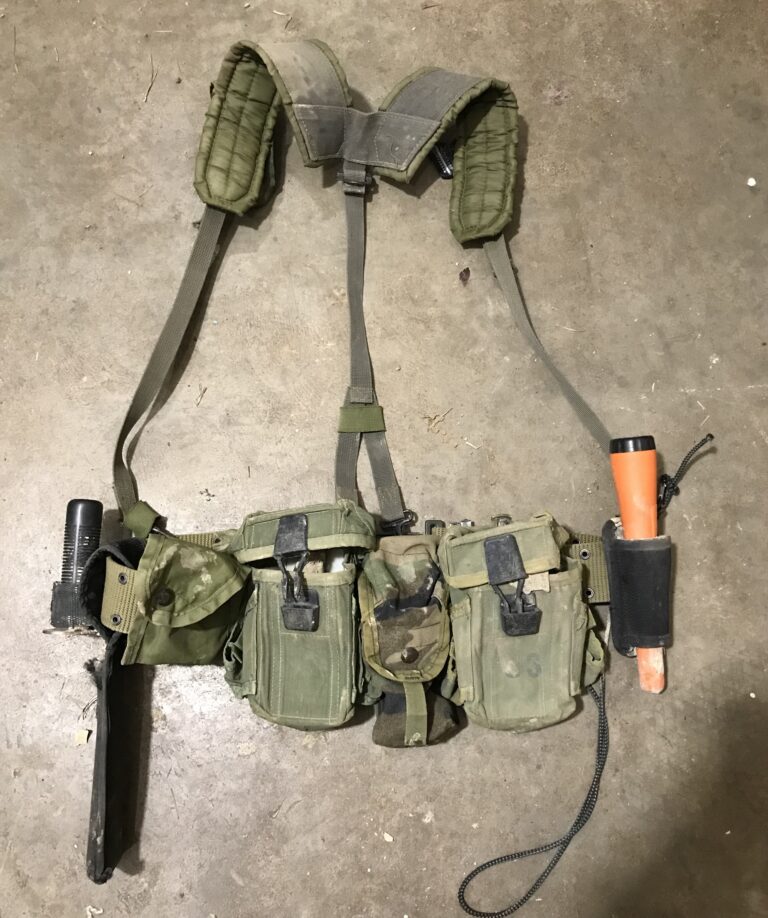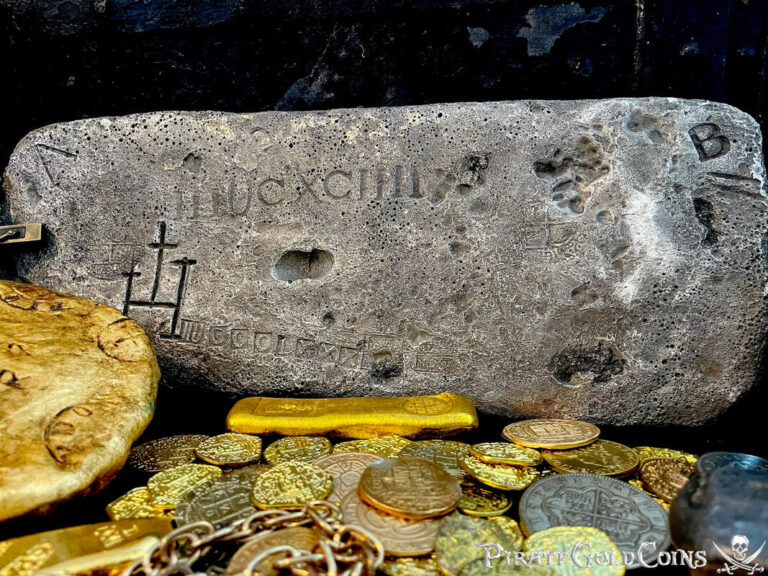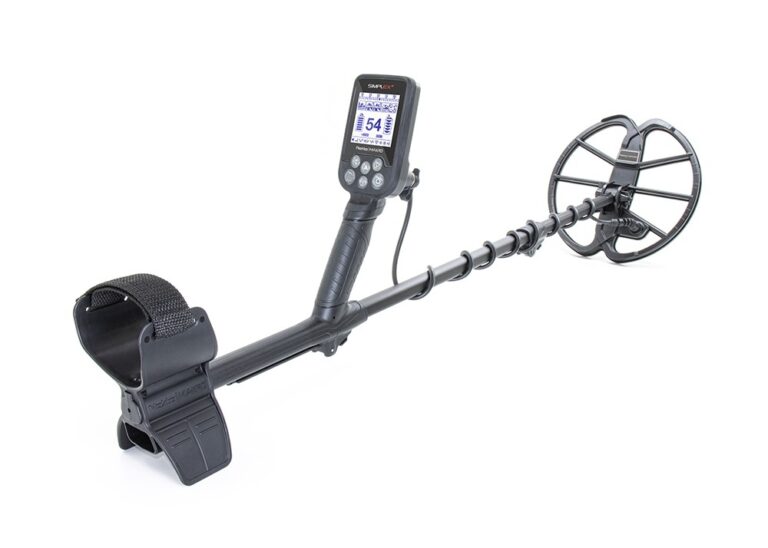The Vital Role of Pulse Induction Metal Detectors in Challenging Ground Conditions
The year was 2014 and I was headed to my third Digging in Virginia event hosted in Culpeper VA. I had my MXT 300 and my newly acquired Whites TDI. I had been to a previous DIV (15 at Coles Hill) but only had my VLF machine which I would soon realize is basically obsolete in that tough soil. Don’t get me wrong the TDI was a brass magnet! It weeded through that highly mineralized soil in culpeper like no joke. But still something was lacking. To give you some sort of perspective. Central VA in the areas of Culpeper, Stevensburg, Remington, Warrenton, and Mitchell’s was super hot. By “Hot” I mean, the soil composition is full of ferrous mineralization that is like headlights trying to punch through a thick fog layer. I have on numerous occasions placed a bullet on top of the ground in Culpeper and scanned it with a VLF only to receive a signal I most likely would never dig in prime soil. But along comes the pulse machines and this changes. The relic hunting days as we knew them were about to change. In April of 2008 Minelab introduced a machine that would single handedly change the game in terms of finding and locating relics, the GPX 4500. It wasn’t until 2015 that I acquired a 4500 and boy I haven’t looked back since. I am by no means what someone would call an expert but I have in my terms “mastered the machine”. The gpx series solely relies on the users hearing of tones (with no display module) to determine what to, and not to dig.
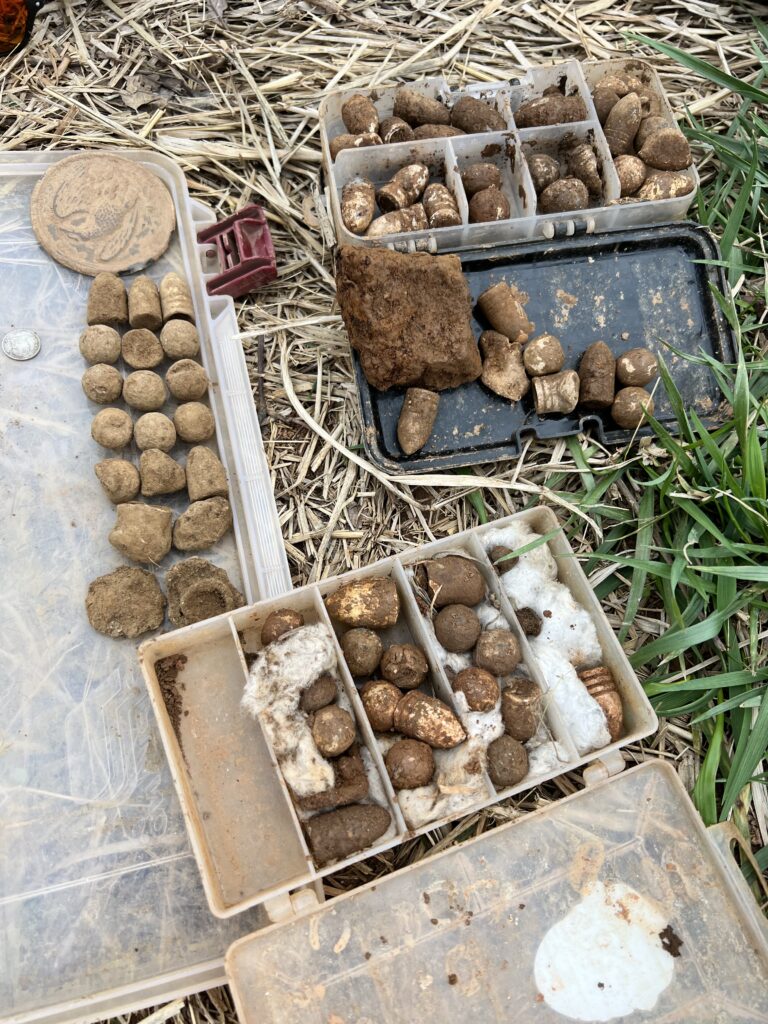
The GPX was designed primarily for gold hunting, But the modern relic hunter has revamped their use into finding long lost historical artifacts. When first starting out you may find the GPX extremely intimidating, which honestly it will be at first! Below I have a “BASIC” startup guide given to me by a very well known user of the GPX series. I say basic because over the years I have tweaked the settings slightly to what I believe works best. This is just a great starting point to getting your machine up and running.
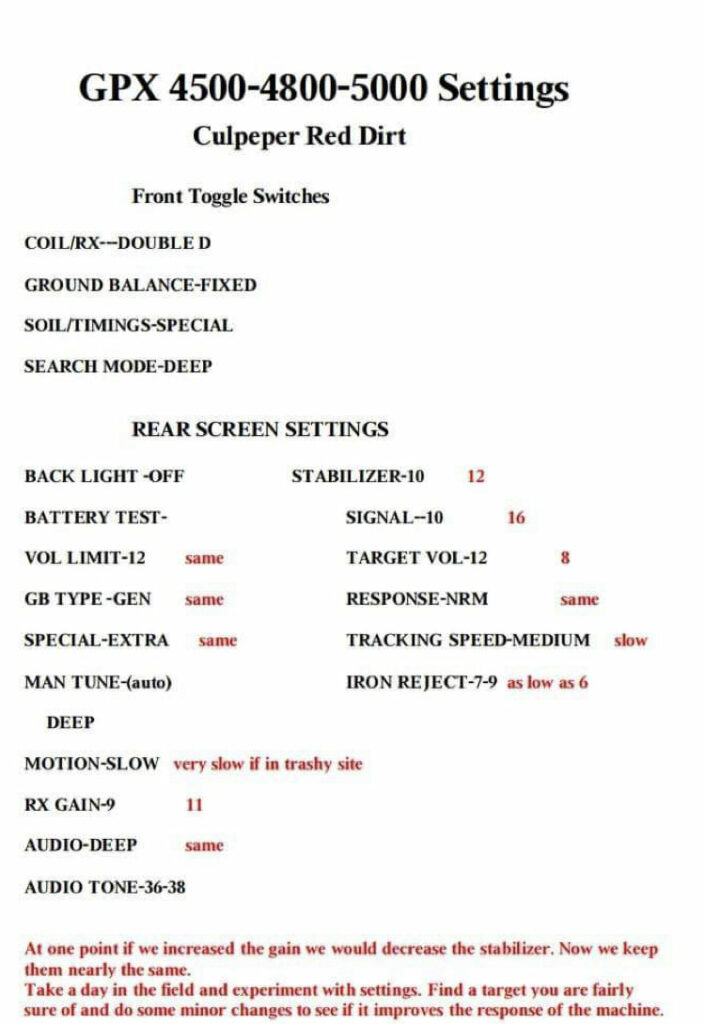
You’re in the field now, what next?! There will be two tones that you will be hearing. A high tone or a low tone. Let’s take a civil war bullet for example. When scanning over a bullet you will hear a low tone that “smoothly” transfers into a high tone. Almost like a “SkoooWeee”. The tone should be super clean and unbroken from any angle. Move around the target 90 degrees and recheck. The signal should stay the same. Again , I am no expert but a trick I have learned from my many years using the GPX is: when you feel as if you’ve located a clean, smooth target, pass your coil over the target with more speed. If it breaks it 90% of the time is iron. I’ve watched countless videos of guys scanning a target slower than normal, and it almost forces the signal to become “good sounding”, once dug I have had countless false targets that have turned into iron. Remember, the GPX does not discriminate so you have to make it work as best as you can. When speeding up the coil over the target, I have cut out countless dug iron signals.

One thing I would like to point out is, many of you have been hunting your sites with a VLF machine with great success. I used to think VLF machines in stable soil was the king. I strictly use the GPX and VLf in all of my sites now, hot ground or not due to the capacities of the machine. For instance: I located a virgin campsite in my hometown in Northern Virginia that I have dug since 2007. I frequented this site for about a decade when on a normal trip I would end up with a couple pieces of drip lead or a small piece of brass. The second I brought a GPX series machine in it almost became a virgin site again. The quantity of deeper relics was astonishing. Now, this is only true about sites that are generally clean and open. Homesites and iron infested areas are pretty much a NO-GO with the GPX. Since then I have brought the GPX back to ALL of my previous sites and unearthed nearly the same amount of relics as before with a VLF.
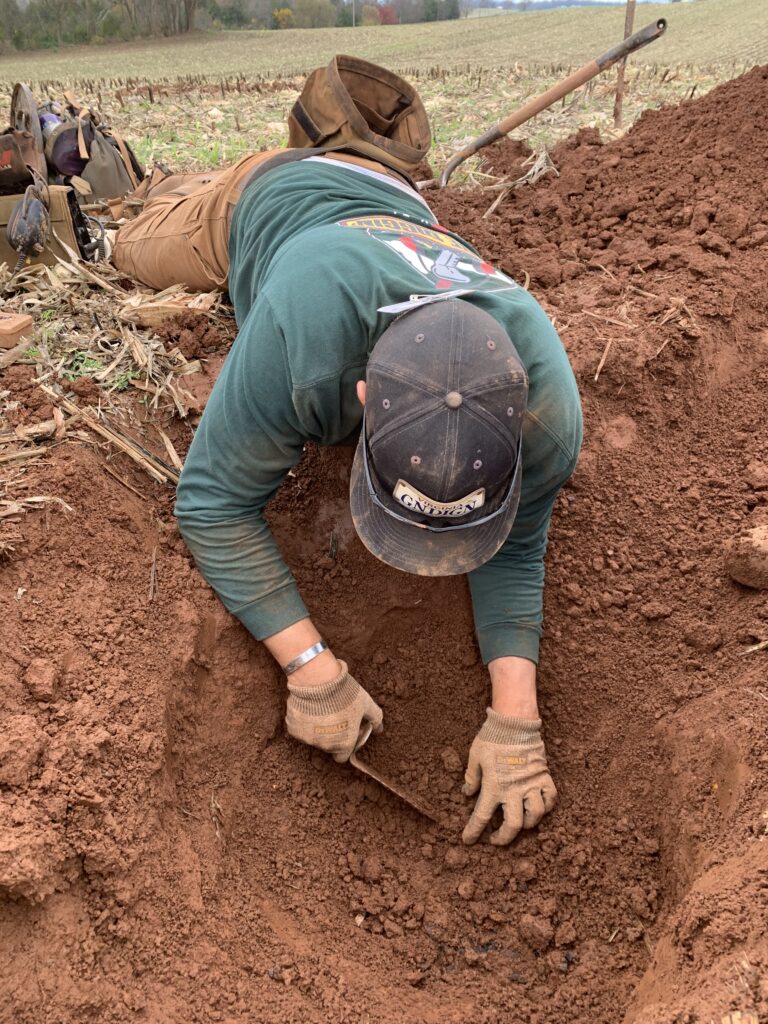
Currently today I use the GPX 5000. To be honest I haven’t noticed any differences in the models. I strictly use a 15” Detech Ultimate spiral coil when the site permits as this coil is the king of kings. There are a multitude of different coil options for these machines. As well as that, you can customize with battery pack holders for the control box to eliminate wearing a harness. Though I wear a harness to take the weight strain off of my arm. There are Bluetooth adapters to allow wireless setups for headphones, and even handmade metal handles to replace the stock plastic ones that sometimes break. All together it is a large investment, but it has changed metal detecting substantially. This is the number one choice for me in my arsenal of machines.
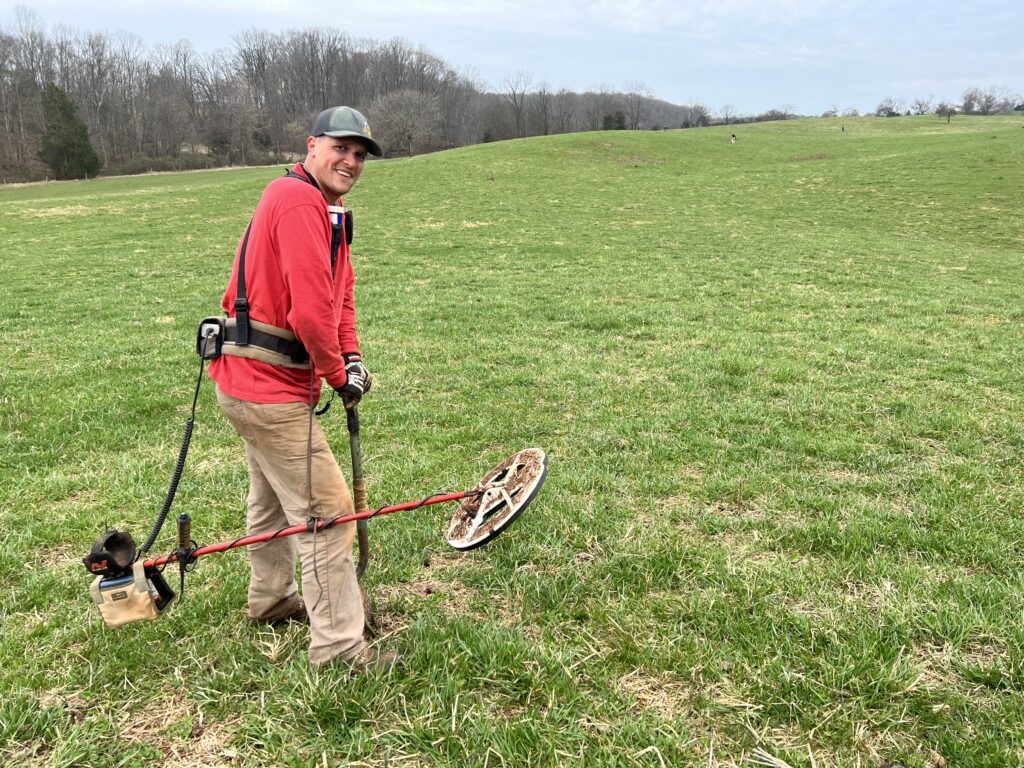
Written by Matt Susteck
